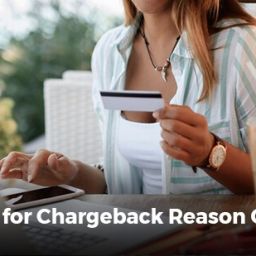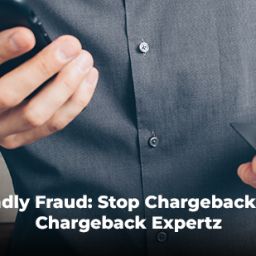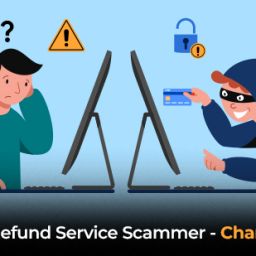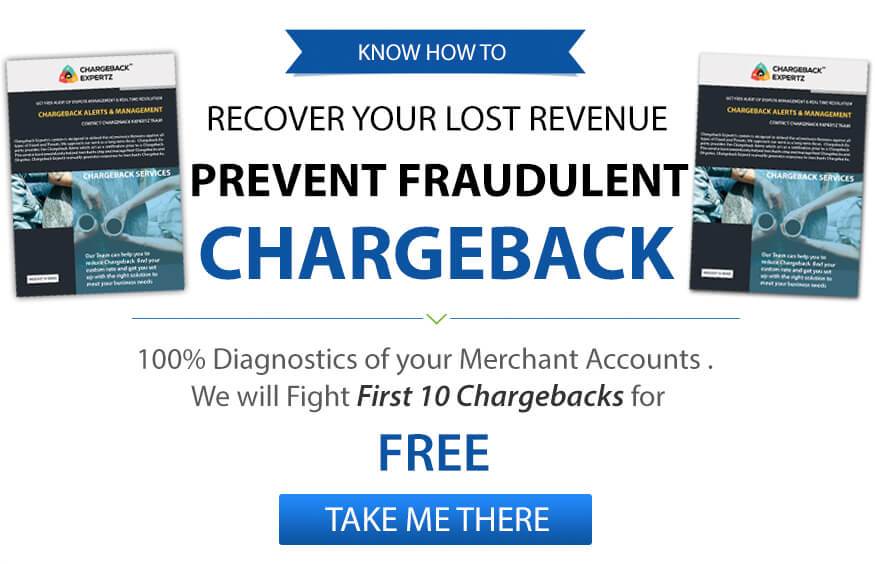
You want to do justice to your customers. This is specifically correct when a dispute takes place, and you find yourself at odds with a buyer. You both have certain rules to follow here. So, it assists to know what the rules are, and getting started before. When customers are the sufferers of payment fraud or illusory merchant practices, they have got the right to file a chargeback. But where does that right originates from? Are there some credit card chargeback laws on the books guaranteeing consumer protections against fraud? Chargeback laws revert almost five decades. At that time, credit cards were still a new creation in the world itself. That is obvious things have changed since the mid-Seventies. So, let’s take a look at the laws controlling the chargeback process, and see how they’ve sustained over the decades.
RECOMMENDED READING
- Steps for fighting chargeback fraud.
- Importance of time in chargeback process.
- A guide to complete chargeback Management.
- Protecting your business against credit card chargeback
- Friendly Fraud in Different Industries
The Commencement: Veracity in Lending & Fair Credit Billing
However, Section 75 is only applicable to UK consumers. In the US, three censorious pieces of federal legislation set the base for the chargeback system:
The Truth in Lending Act (TILA)
This law was from the word go enacted as Title I of the Consumer Credit Protection Act. The earliest purpose of TILA was to stimulate the informed use of consumer credit. For example, the act permits consumers to discard some credit transactions involving a charge on the person’s primary home.
In 1970, lawmakers disallowed issuers from sending uninvited credit cards to consumers. Several other changes and updates to the act. Such as those accommodate in the 2010 Dodd-Frank Act, were conveyed into law in consecutive decades.
The Fair Credit Billing Act (FCBA)
Six years later the native legislation passed, and the Find CBA came as an update to TILA. This set of rules helped clarify details of the original legislation–categorically how they exist to the following:
- Practices bind to credit cards.
- How to supply a means to dispute credit billing.
- How to reveal maximum interest rates in a variable-rate credit contract.
The Electronic Funds Transfer Act (EFTA)
The Electronic Fund Transfer Act (EFTA, at times referred to as Regulation E) is a federal instruction targeted at financial institutions requiring banks to provide unquestionable information to customers concerning electronic fund transfers (EFTs). It also manages banks’ reactions to consumer complaints and limits liability for disoriented stolen debit cards.
The EFTA was first ratified in 1978. It was embraced as a direct response to the progressive use of Automated Teller Machines (ATMs). The injunction requires transparency from financial institutions regarding electronic transfers. It also is a consumer liability for unauthorized transactions.
The Act also rules financial institutions assign liability if a customer’s card is lost or snatched. For merchants, this may be the instant point of view to the mandate.
Eventually, the Uniform Commercial Code, or UCC, shapes the current chargeback practices.
The UCC targets to standardize the laws governing sales and profit-oriented transactions all across the US market. This is an important function; the UCC makes sure that companies can look to a single, responsible authority for compliance. Otherwise, they’d have to deal with a complicated portion of state and territorial laws to perform interstate commerce. This would be next to possible for most businesses to do.
Interpreting the UCC & Chargeback Laws
This section includes six key paragraphs. Let’s go to at each one, see if we can decode the legalese, and give some clarification on what it recalls.
Paragraph 1
If a collecting bank has made a changeover or you can say provisional settlement with its customer for an item and fails by because of honor. Termination of payments by a bank. Or otherwise to get a settlement for the item which is or becomes full and final. The bank may repeal the settlement given by it. Chargeback amount of any credit granted for the item to its customer’s account.
Or acquire a refund from its customer. Whether or not it is able to get the item by its deadline or within a longer reasonable time after it gets the facts it gives the item or sends a notification of the facts. If the return or notice gets delayed beyond the bank’s midnight deadline or a longer reasonable time after it learns the facts. The bank may nullify the settlement. Chargeback credit. Or get a refund from its customer. But it is responsible for any loss resulting from the delay. These rights to revoke, chargeback, and get a refund terminates if and when a settlement for the item got by the bank is or becomes final.
What it means:
When a customer asks for a chargeback. That money isn’t withdrawn directly from the merchant’s account. Apart from that, the issuer withdraws the money from the merchant’s acquiring bank. In simple language, Paragraph 1 directs a collecting bank (the acquirer) has the authority to withdraw funds from merchants’ accounts to cover chargebacks. So, while the acquirer is primarily responsible, they can recover their losses from the merchant. Also, if the bank holds filing, they can still carry out these processes. However, the bank is responsible for any additional loss resulting from the delay.
Paragraph 2
A collecting bank returns an item. When it is given or delivered to the bank’s customer or transferor or pursuant to its instructions.
What it means:
Falling under the Index of Definitions in Section 4-214, an “item” suggests “a promise or order to pay money tamed by a bank for collection or payment.” Paragraph 2 shows what it means for the collecting bank (the acquirer) to “return an item” in the language under Paragraph 1.
Paragraph 3
A depositary bank that is also the payer can chargeback the amount of an item to its customer’s account or get a refund in spirit with the section governing the return of an item received by a payer bank for credit on its books (Section 4-301).
What it means:
Paragraph 3 of the credit card chargeback laws offer the payer bank (the issuer) the right to transfer funds got through a chargeback to the cardholder’s account.
Paragraph 4
The right to chargeback is not overblown by:
(1) Earlier use of a credit given for the item; or
(2) Failure by any bank to practice ordinary care with respect to the item, but a bank so failing remains responsible.
What it means:
Paragraph 4 outlines two prompt conditions that won’t influence the right to a dispute under credit card chargeback laws. Subsection 1 says, even if a source of credit has been used earlier for an item. It is still competent for a chargeback. Under Subsection 2, chargeback rights are also not influenced by the bank’s mishandling of an item.
Paragraph 5
A failure to charge back or get a refund does not affect other rights of the bank against the customer or any other party.
![]()
Email us anytime!
Email customer service 24/7
![]()
Call us anytime!
Reach customer care 24/7 at +1 (888) 901-8653
What it means:
In this section of the chargeback laws, we come across that even if an acquirer is not able to overturn a chargeback and cannot recover funds from the merchant after a sufficient time, this does not invalidate any other rights got by the bank.
Paragraph 6
If credit is given in dollars as the parallel of the value of an item payable in foreign money. The dollar amount of any chargeback or refund must be deliberated on the basis of the bank offered. Patch rate for the foreign money triumph on the day. When the person entitled to the charge-back or refund learns that they will not receive payment in the general course.
What it means:
Paragraph 6 details how to perform a chargeback by getting foreign currency involved. The bank enumerates the exchange rate based on the currency’s value at the moment of the quote.
Chargeback Laws are generally one part of the equation
The credit card chargeback laws set forth above form the foundation of the chargeback system here in the US. But obviously, they’re just the basics. You also need to version for decades of overlapping—and often unessential—industry policies and practices. The rules outlining how you perform a chargeback vary based on the card scheme. In fact, the guide telling MasterCard chargeback rules in single is more than 400 pages long!
Plus, those rules can fluctuate at any time. For example, Visa renovate its complete process in 2018 with the Visa Claims Resolution system. MasterCard did something very indistinguishable with their MasterCard Dispute Resolution initiative. Other minor updates and rule switches happen constantly.
The payments industry is in bad books for inconsistency. That’s why bad actors find it convenient to abuse processes and grip them to commit fraud. Others, simply unable to understand the rules, fortuitously cause tens of billions of dollars in losses every year because of friendly fraud. The chargeback laws, as they exist, are important consumer protections, but they’re in great need of an update to bring them in line with the real face of the digital marketplace.
Healthier Compliance. Amazing Results.
Still in a disillusion? Don’t worry: you’re not only the one.
Trying to get directions through decades’ worth of chargeback laws is a tough task. As a result, many businesses select to simply write off chargebacks as something that’s too complicated to get tensed with. This is not the correct approach, though. After all, you should invest valuable time expanding your business, not researching hidden credit card chargeback laws and network regulations. You can’t manage to let those efforts go to waste.
Better chargeback management is available and possible, and it can make everything a lot easier in the future.




